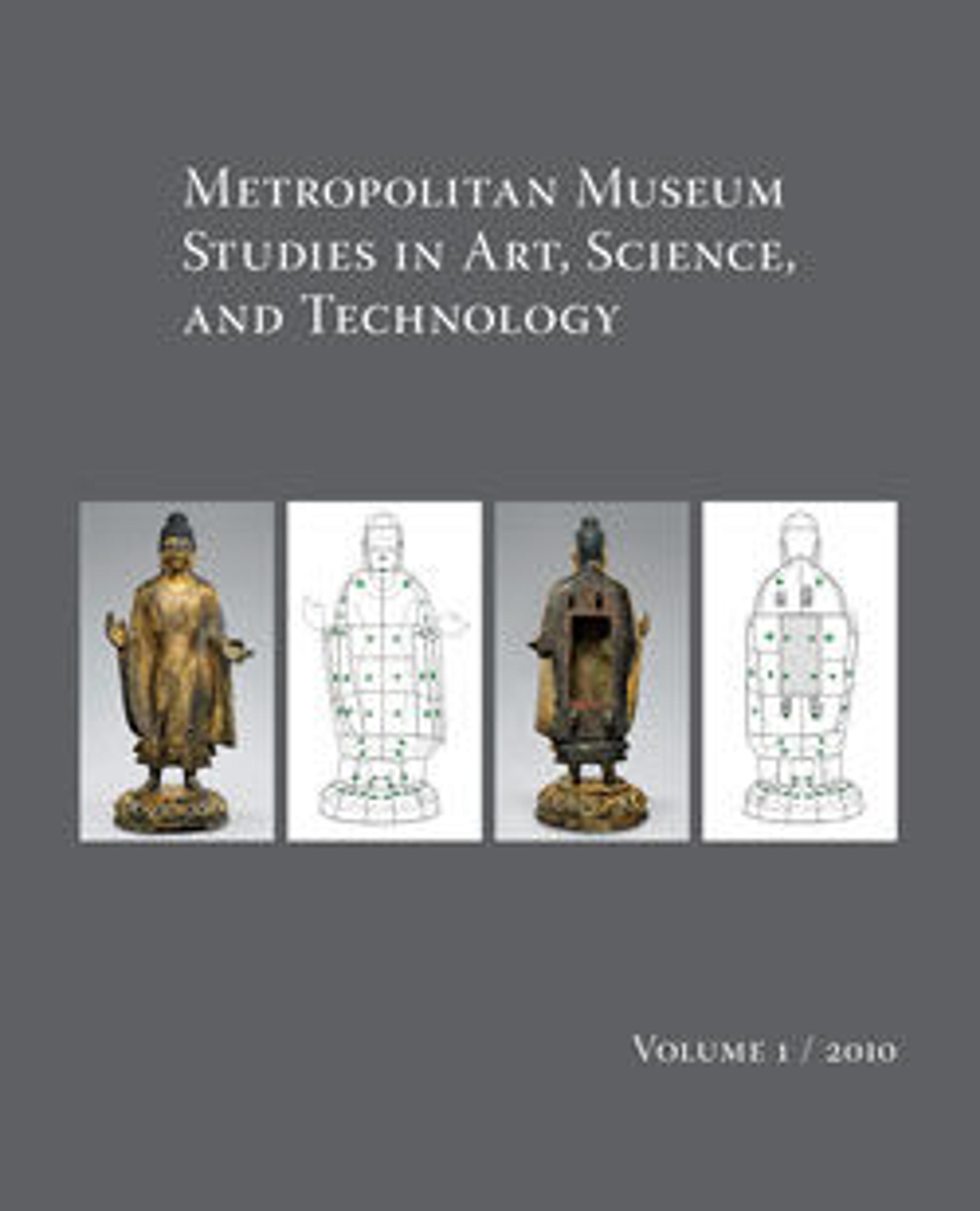Seated Harpokrates with the crown of Amun, named as "Harpokrates-the-great, the eldest, the first of Amun"
The figure represents a child god in a seated/reclining position, wearing the double feather crown, complete with a streamer at the back. The crown associates him with the god Amun, a connection that is also made explicit in the inscription on the base. The child god, as here, is usually distinguished from adult gods by a range of iconographic clues: his nudity, the finger raised to the mouth (a child-like gesture), and a sidelock on the right side of his head. The sidelock was cast separately and was then mechanically attached to the crown with a pin. The braiding is inlaid with silver.
Child gods grew in popularity and cult from the Third Intermediate Period onwards, rivaling even the most powerful and ancient gods, especially as temple offerings. Because of their profusion and many local forms, generally it is very difficult to assign precise identities to child gods, but an inscription on the base names this figure as Harpokrates. Horus the child (or Harpokrates) is best known as the son of Osiris and Isis, but in some cases, such as this one and 25.184.19, he is also referred to as the son of Amun. Such multi-layered associations are common to Egyptian religion, which had no strict canon perse and which, by this point in time, was built upon millennia of change and adaptation.
Child gods grew in popularity and cult from the Third Intermediate Period onwards, rivaling even the most powerful and ancient gods, especially as temple offerings. Because of their profusion and many local forms, generally it is very difficult to assign precise identities to child gods, but an inscription on the base names this figure as Harpokrates. Horus the child (or Harpokrates) is best known as the son of Osiris and Isis, but in some cases, such as this one and 25.184.19, he is also referred to as the son of Amun. Such multi-layered associations are common to Egyptian religion, which had no strict canon perse and which, by this point in time, was built upon millennia of change and adaptation.
Artwork Details
- Title: Seated Harpokrates with the crown of Amun, named as "Harpokrates-the-great, the eldest, the first of Amun"
- Period: Late Period–Ptolemaic Period
- Date: 664–30 B.C.
- Geography: From Egypt
- Medium: Cupreous metal, precious metal inlay
- Dimensions: H. 28.6 × W. 5.8 × D. 9 cm (11 1/4 × 2 5/16 × 3 9/16 in.)
- Credit Line: Gift of Mrs. S. W. Straus, 1925
- Object Number: 25.184.19
- Curatorial Department: Egyptian Art
More Artwork
Research Resources
The Met provides unparalleled resources for research and welcomes an international community of students and scholars. The Met's Open Access API is where creators and researchers can connect to the The Met collection. Open Access data and public domain images are available for unrestricted commercial and noncommercial use without permission or fee.
To request images under copyright and other restrictions, please use this Image Request form.
Feedback
We continue to research and examine historical and cultural context for objects in The Met collection. If you have comments or questions about this object record, please contact us using the form below. The Museum looks forward to receiving your comments.
